Abstract:
This paper examines aspects of design technology required to explore advanced logic-circuit design using carbon nanotube field-effect transistor (CNTFET) devices. An over...Show MoreMetadata
Abstract:
This paper examines aspects of design technology required to explore advanced logic-circuit design using carbon nanotube field-effect transistor (CNTFET) devices. An overview of current types of CNTFETs is given and highlights the salient characteristics of each. Compact modeling issues are addressed and new models are proposed implementing: 1) a physics-based calculation of energy conduction sub-band minima to allow a realistic analysis of the impact of CNT helicity and radius on the dc characteristics; 2) descriptions of ambipolar behavior in Schottky-barrier CNTFETs and ambivalence in double-gate CNTFETs (DG-CNTFETs). Using the available models, the influence of the parameters on the device characteristics were simulated and analyzed. The exploitation of properties specific to CNTFETs to build functions inaccessible to MOSFETs is also described, particularly with respect to the use of DG-CNTFETs in fine-grain reconfigurable logic.
Published in: IEEE Transactions on Circuits and Systems I: Regular Papers ( Volume: 54, Issue: 11, November 2007)
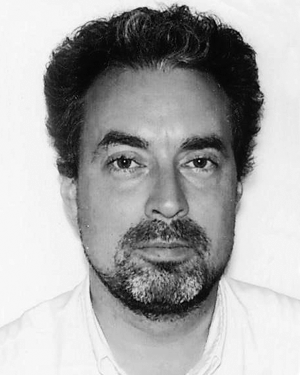
École Centrale de Lyon, Ecully, France
Ian O'Connor (S'95–M'98) was born in Cambridge, U.K., in 1969. He received the European M.Sc. degree in electronics engineering from the University of Essex, Essex, U.K., in 1992, the Ph.D. degree in electronics from the University of Lille, Lille, France, in 1997, and the professoral dissertation (Habilitation à Diriger des Recherches) from École Centrale de Lyon, Ecully, France, in 2005.
From 1993 to 1997, he was a Resea...Show More
Ian O'Connor (S'95–M'98) was born in Cambridge, U.K., in 1969. He received the European M.Sc. degree in electronics engineering from the University of Essex, Essex, U.K., in 1992, the Ph.D. degree in electronics from the University of Lille, Lille, France, in 1997, and the professoral dissertation (Habilitation à Diriger des Recherches) from École Centrale de Lyon, Ecully, France, in 2005.
From 1993 to 1997, he was a Resea...View more

École Centrale de Lyon, Ecully, France
Junchen Liu was born in Shandong, China, in 1980. She received the B.Sc. degree in electrical engineering from Beihang University (BUAA), Beijing, China, in 2003, the M.Sc. degree in electronics from École Centrale de Lyon, Ecully, France in 2005. She is currently pursuing the Ph.D. degree at the Lyon Institute of Nanotechnology, École Centrale de Lyon.
Her research interests concern the design of novel circuit structures ...Show More
Junchen Liu was born in Shandong, China, in 1980. She received the B.Sc. degree in electrical engineering from Beihang University (BUAA), Beijing, China, in 2003, the M.Sc. degree in electronics from École Centrale de Lyon, Ecully, France in 2005. She is currently pursuing the Ph.D. degree at the Lyon Institute of Nanotechnology, École Centrale de Lyon.
Her research interests concern the design of novel circuit structures ...View more
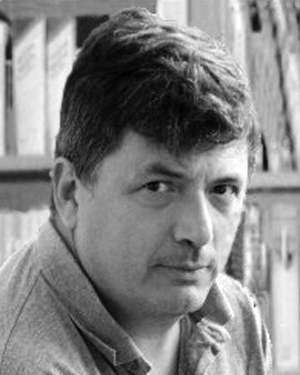
École Centrale de Lyon, Ecully, France
Frédéric Gaffiot was born in 1959. He received the graduate degree in applied physics from École Normale Supérieure de Cachan, Cachan, France, and the Ph.D. degree in micro-electronics from the Lyon Institute of Nanotechnology (previously Laboratory of Electronics, Optoelectronics and Microsystems) at École Centrale de Lyon, Ecully, France, in 1987.
He was an Associate Professor at École Centrale de Lyon from 1985 to 2000,...Show More
Frédéric Gaffiot was born in 1959. He received the graduate degree in applied physics from École Normale Supérieure de Cachan, Cachan, France, and the Ph.D. degree in micro-electronics from the Lyon Institute of Nanotechnology (previously Laboratory of Electronics, Optoelectronics and Microsystems) at École Centrale de Lyon, Ecully, France, in 1987.
He was an Associate Professor at École Centrale de Lyon from 1985 to 2000,...View more
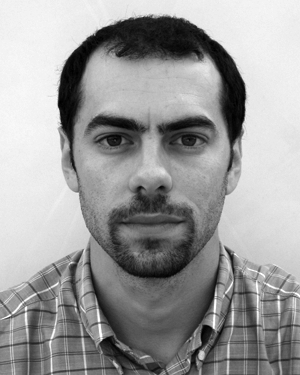
Institut dÉlectronique du Solide et des Systèmes, Illkirch-Graffenstaden, France
Fabien Prégaldiny was born in France in 1977. He received the M.S. and Ph.D. degrees in microelectronics from Louis Pasteur University (ULP), Strasbourg, France, in 2001 and 2003, respectively.
His doctoral research pertained to the modeling and simulation of deep-sub-micron MOSFETs. In 2004, he joined the École Nationale Supérieure de Physique de Strasbourg (ENSPS), Strasbourg, France, as an Associate Professor, and the N...Show More
Fabien Prégaldiny was born in France in 1977. He received the M.S. and Ph.D. degrees in microelectronics from Louis Pasteur University (ULP), Strasbourg, France, in 2001 and 2003, respectively.
His doctoral research pertained to the modeling and simulation of deep-sub-micron MOSFETs. In 2004, he joined the École Nationale Supérieure de Physique de Strasbourg (ENSPS), Strasbourg, France, as an Associate Professor, and the N...View more
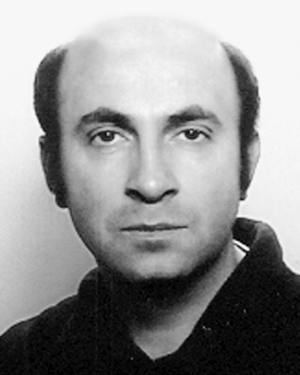
Institut dÉlectronique du Solide et des Systèmes, Illkirch-Graffenstaden, France
Christophe Lallement (M'96) received the Ph.D. degree from École Nationale Supérieure des Télecommunications (ENST), Paris, France, in 1993.
From 1994 to September 1997, he was a Postdoctoral Research Scientist at the laboratory of Electronics, Swiss Federal Institute of Technology (EPFL), Lausanne, Switzerland, working on the characterization and modeling of the MOSFET transistor in the development team of the EKV MOST mo...Show More
Christophe Lallement (M'96) received the Ph.D. degree from École Nationale Supérieure des Télecommunications (ENST), Paris, France, in 1993.
From 1994 to September 1997, he was a Postdoctoral Research Scientist at the laboratory of Electronics, Swiss Federal Institute of Technology (EPFL), Lausanne, Switzerland, working on the characterization and modeling of the MOSFET transistor in the development team of the EKV MOST mo...View more
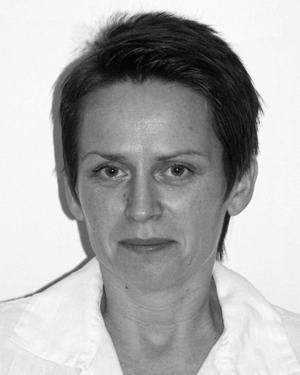
IMS Laboratory, University of Bordeaux 1, Talence, France
Cristell Maneux was born in France, in 1968. She received the Ph.D. degree in electronics from the University of Bordeaux, Talence, France, in 1998.
Her Ph.D. topic was on the study of failure mechanisms of GaAs-based heterojunction bipolar transistors (HBts). Since 1998, she has been Associate Professor at the University of Bordeaux, and her current research topics are the evaluation of the III-V HBT reliability and the m...Show More
Cristell Maneux was born in France, in 1968. She received the Ph.D. degree in electronics from the University of Bordeaux, Talence, France, in 1998.
Her Ph.D. topic was on the study of failure mechanisms of GaAs-based heterojunction bipolar transistors (HBts). Since 1998, she has been Associate Professor at the University of Bordeaux, and her current research topics are the evaluation of the III-V HBT reliability and the m...View more
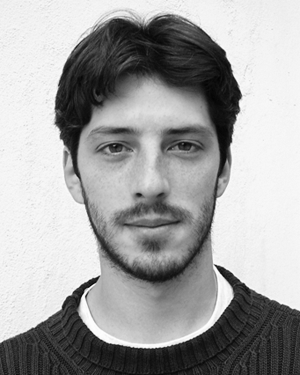
IMS Laboratory, University of Bordeaux 1, Talence, France
Johnny Goguet was born in France in 1982. He received the M.Sc. degree in microelectronics from the University of Bordeaux 1, Talence, France, in 2005. He is currently pursuing the Ph.D. degree in carbon nanotube compact modeling at the IMS Laboratory, Bordeaux, France.
Johnny Goguet was born in France in 1982. He received the M.Sc. degree in microelectronics from the University of Bordeaux 1, Talence, France, in 2005. He is currently pursuing the Ph.D. degree in carbon nanotube compact modeling at the IMS Laboratory, Bordeaux, France.View more
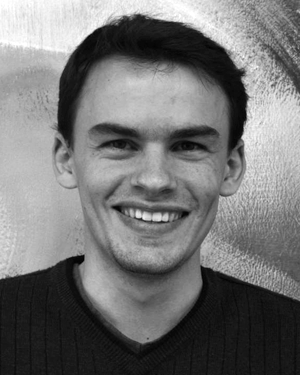
IMS Laboratory, University of Bordeaux 1, Talence, France
Sébastien Frégonèse was born in Bordeaux, France, in 1979. He received the M.Sc. and Ph.D. degrees in electronics from the University of Bordeaux, Talence, France, in 2002 and 2005, respectively.
During his Ph.D. research, he investigated bulk and thin system-on-insulator SiGe heterojunction bipolar transistors, with emphasis on compact modeling. From 2005 to 2006, he worked at the Technical University of Delft, Delft, The...Show More
Sébastien Frégonèse was born in Bordeaux, France, in 1979. He received the M.Sc. and Ph.D. degrees in electronics from the University of Bordeaux, Talence, France, in 2002 and 2005, respectively.
During his Ph.D. research, he investigated bulk and thin system-on-insulator SiGe heterojunction bipolar transistors, with emphasis on compact modeling. From 2005 to 2006, he worked at the Technical University of Delft, Delft, The...View more
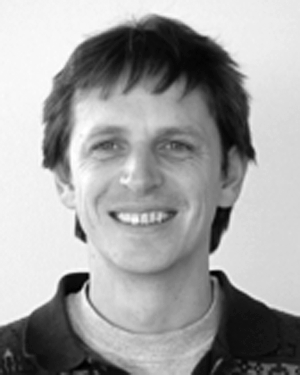
IMS Laboratory, University of Bordeaux 1, Talence, France
Thomas Zimmer was born in Wollbach, Germany. He received the M.Sc. degree in physics from the University of Würzburg, Würzburg, Germany, in 1989, and the Ph.D. degree in electronics from the University of Bordeaux 1, Talence, France, in 1992.
Since 2003, he has been a Professor at the University of Bordeaux 1. His research focuses on the characterization and modeling of high frequency devices, in particular Si/SiGe heteroj...Show More
Thomas Zimmer was born in Wollbach, Germany. He received the M.Sc. degree in physics from the University of Würzburg, Würzburg, Germany, in 1989, and the Ph.D. degree in electronics from the University of Bordeaux 1, Talence, France, in 1992.
Since 2003, he has been a Professor at the University of Bordeaux 1. His research focuses on the characterization and modeling of high frequency devices, in particular Si/SiGe heteroj...View more
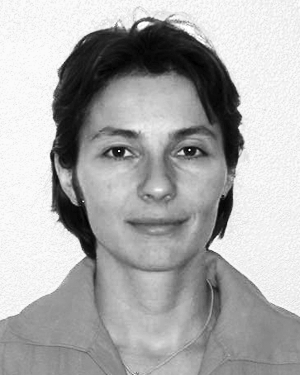
Techniques of Informatics and Microelectronics for Computer Architectures (TIMA) Laboratory, Grenoble, France
Lorena Anghel (M'02) received the B.Sc. and M.Sc. in electrical engineering and telecommunications from the Polytechnic Institute of Bucharest, Bucharest, Romania, in 1996 and 1997, respectively, and the Ph.D. degree from the National Polytechnic Institute of Grenoble (INPG), Grenoble, France.
She is currently an Associate Professor at the same institution and a member of the research staff at the Techniques of Informatics...Show More
Lorena Anghel (M'02) received the B.Sc. and M.Sc. in electrical engineering and telecommunications from the Polytechnic Institute of Bucharest, Bucharest, Romania, in 1996 and 1997, respectively, and the Ph.D. degree from the National Polytechnic Institute of Grenoble (INPG), Grenoble, France.
She is currently an Associate Professor at the same institution and a member of the research staff at the Techniques of Informatics...View more
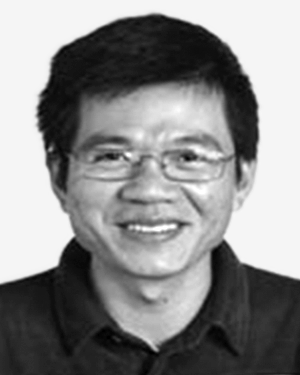
Techniques of Informatics and Microelectronics for Computer Architectures (TIMA) Laboratory, Grenoble, France
Trong-Trinh Dang was born in Vinh-Phuc, Vietnam, in 1978. He received the B.Sc. degree in electronics and telecommunication from Vietnam National University of Hanoi (VNUH), Hanoi, Vietnam, in 2001, and the M.Sc. degree in micro and nano-electronics from the Joseph Fourier University, Grenoble, France, in 2005. He is currently working toward the Ph.D. degree at the National Polytechnic Institute of Grenoble (INPG), Grenob...Show More
Trong-Trinh Dang was born in Vinh-Phuc, Vietnam, in 1978. He received the B.Sc. degree in electronics and telecommunication from Vietnam National University of Hanoi (VNUH), Hanoi, Vietnam, in 2001, and the M.Sc. degree in micro and nano-electronics from the Joseph Fourier University, Grenoble, France, in 2005. He is currently working toward the Ph.D. degree at the National Polytechnic Institute of Grenoble (INPG), Grenob...View more
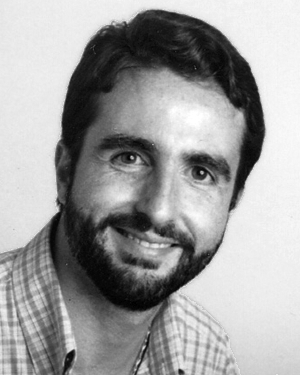
Techniques of Informatics and Microelectronics for Computer Architectures (TIMA) Laboratory, Grenoble, France
Régis Leveugle (M'91) received the Ph.D. degree in microelectronics from the National Polytechnic Institute of Grenoble (INPG), Grenoble, France, in 1990.
He is currently Professor at the same institute and Vice-Director of the Techniques of Informatics and Microelectronics for Computer Architectures (TIMA) Laboratory, Grenoble, France. His main interests are computer architecture, VLSI design methods and CAD tools, fault-...Show More
Régis Leveugle (M'91) received the Ph.D. degree in microelectronics from the National Polytechnic Institute of Grenoble (INPG), Grenoble, France, in 1990.
He is currently Professor at the same institute and Vice-Director of the Techniques of Informatics and Microelectronics for Computer Architectures (TIMA) Laboratory, Grenoble, France. His main interests are computer architecture, VLSI design methods and CAD tools, fault-...View more

École Centrale de Lyon, Ecully, France
Ian O'Connor (S'95–M'98) was born in Cambridge, U.K., in 1969. He received the European M.Sc. degree in electronics engineering from the University of Essex, Essex, U.K., in 1992, the Ph.D. degree in electronics from the University of Lille, Lille, France, in 1997, and the professoral dissertation (Habilitation à Diriger des Recherches) from École Centrale de Lyon, Ecully, France, in 2005.
From 1993 to 1997, he was a Research and Teaching Assistant with the Institut Supérieur d'Electronique du Nord, Nord, France, and from 1997 to 1998, he was a Senior CAD Engineer with Philips Semiconductors, U.K. He joined École Centrale de Lyon in 1998 as Associate Professor, where he is currently Head of the Heterogeneous Design Group at the Lyon Institute of Nanotechnology, of which he is also one of the vice-directors. His research interests include design methods and tools for physically heterogeneous systems on chip, and their application to novel architectures based on non-conventional devices. He has authored or co-authored well over 70 book chapters, journal publications and conference papers and has presented invited papers at several major conferences.
Ian O'Connor (S'95–M'98) was born in Cambridge, U.K., in 1969. He received the European M.Sc. degree in electronics engineering from the University of Essex, Essex, U.K., in 1992, the Ph.D. degree in electronics from the University of Lille, Lille, France, in 1997, and the professoral dissertation (Habilitation à Diriger des Recherches) from École Centrale de Lyon, Ecully, France, in 2005.
From 1993 to 1997, he was a Research and Teaching Assistant with the Institut Supérieur d'Electronique du Nord, Nord, France, and from 1997 to 1998, he was a Senior CAD Engineer with Philips Semiconductors, U.K. He joined École Centrale de Lyon in 1998 as Associate Professor, where he is currently Head of the Heterogeneous Design Group at the Lyon Institute of Nanotechnology, of which he is also one of the vice-directors. His research interests include design methods and tools for physically heterogeneous systems on chip, and their application to novel architectures based on non-conventional devices. He has authored or co-authored well over 70 book chapters, journal publications and conference papers and has presented invited papers at several major conferences.View more

École Centrale de Lyon, Ecully, France
Junchen Liu was born in Shandong, China, in 1980. She received the B.Sc. degree in electrical engineering from Beihang University (BUAA), Beijing, China, in 2003, the M.Sc. degree in electronics from École Centrale de Lyon, Ecully, France in 2005. She is currently pursuing the Ph.D. degree at the Lyon Institute of Nanotechnology, École Centrale de Lyon.
Her research interests concern the design of novel circuit structures based on emerging devices.
Junchen Liu was born in Shandong, China, in 1980. She received the B.Sc. degree in electrical engineering from Beihang University (BUAA), Beijing, China, in 2003, the M.Sc. degree in electronics from École Centrale de Lyon, Ecully, France in 2005. She is currently pursuing the Ph.D. degree at the Lyon Institute of Nanotechnology, École Centrale de Lyon.
Her research interests concern the design of novel circuit structures based on emerging devices.View more

École Centrale de Lyon, Ecully, France
Frédéric Gaffiot was born in 1959. He received the graduate degree in applied physics from École Normale Supérieure de Cachan, Cachan, France, and the Ph.D. degree in micro-electronics from the Lyon Institute of Nanotechnology (previously Laboratory of Electronics, Optoelectronics and Microsystems) at École Centrale de Lyon, Ecully, France, in 1987.
He was an Associate Professor at École Centrale de Lyon from 1985 to 2000, and has been a full Professor since 2001. His research fields involve analog and mixed-signal circuit design, behavioral modeling, multi physics design, optical interconnects, system-on-chip design, and wireless sensor networks. He is author or co-author of about 70 reviewed journal or proceeding papers.
Frédéric Gaffiot was born in 1959. He received the graduate degree in applied physics from École Normale Supérieure de Cachan, Cachan, France, and the Ph.D. degree in micro-electronics from the Lyon Institute of Nanotechnology (previously Laboratory of Electronics, Optoelectronics and Microsystems) at École Centrale de Lyon, Ecully, France, in 1987.
He was an Associate Professor at École Centrale de Lyon from 1985 to 2000, and has been a full Professor since 2001. His research fields involve analog and mixed-signal circuit design, behavioral modeling, multi physics design, optical interconnects, system-on-chip design, and wireless sensor networks. He is author or co-author of about 70 reviewed journal or proceeding papers.View more

Institut dÉlectronique du Solide et des Systèmes, Illkirch-Graffenstaden, France
Fabien Prégaldiny was born in France in 1977. He received the M.S. and Ph.D. degrees in microelectronics from Louis Pasteur University (ULP), Strasbourg, France, in 2001 and 2003, respectively.
His doctoral research pertained to the modeling and simulation of deep-sub-micron MOSFETs. In 2004, he joined the École Nationale Supérieure de Physique de Strasbourg (ENSPS), Strasbourg, France, as an Associate Professor, and the National Center for Scientific Research (CNRS) at the Laboratory of Physics and Applications of Semiconductors (PHASE). Since January 2005, he has been with the Institut d'Electronique du Solide et des Systèmes (InESS) Research Institute, Illkirch, France, which is a joint laboratory of the ULP and CNRS. His research interests focus on compact modeling and simulation of advanced semiconductor devices like carbon nanotube field-effect transistor (CNTFET), double-gate MOSFET, and FinFET. He is also interested in the use of the VHDL-AMS hardware description language in compact modeling.
Fabien Prégaldiny was born in France in 1977. He received the M.S. and Ph.D. degrees in microelectronics from Louis Pasteur University (ULP), Strasbourg, France, in 2001 and 2003, respectively.
His doctoral research pertained to the modeling and simulation of deep-sub-micron MOSFETs. In 2004, he joined the École Nationale Supérieure de Physique de Strasbourg (ENSPS), Strasbourg, France, as an Associate Professor, and the National Center for Scientific Research (CNRS) at the Laboratory of Physics and Applications of Semiconductors (PHASE). Since January 2005, he has been with the Institut d'Electronique du Solide et des Systèmes (InESS) Research Institute, Illkirch, France, which is a joint laboratory of the ULP and CNRS. His research interests focus on compact modeling and simulation of advanced semiconductor devices like carbon nanotube field-effect transistor (CNTFET), double-gate MOSFET, and FinFET. He is also interested in the use of the VHDL-AMS hardware description language in compact modeling.View more

Institut dÉlectronique du Solide et des Systèmes, Illkirch-Graffenstaden, France
Christophe Lallement (M'96) received the Ph.D. degree from École Nationale Supérieure des Télecommunications (ENST), Paris, France, in 1993.
From 1994 to September 1997, he was a Postdoctoral Research Scientist at the laboratory of Electronics, Swiss Federal Institute of Technology (EPFL), Lausanne, Switzerland, working on the characterization and modeling of the MOSFET transistor in the development team of the EKV MOST model. In September 1997, he joined the Louis Pasteur University (ULP), Strasbourg, France, as an Associate Professor, and the National Center for Scientific Research (CNRS), Laboratory for Physics and Applications of Semiconductors (PHASE laboratory). Since September 2003, he has been Professor at the Engineering School, École Nationale Supérieure de Physique de Strasbourg (ENSPS), Strasbourg, France. His current research, now at the Institut d'Electronique du Solide et des Systèmes (InESS), Illkirch, France, focuses on the study and modeling of advanced devices, and on the modeling of mixed-signal systems with VHDL-AMS. He is the responsible for the group “Integrated instrumental systems” at InESS.
Christophe Lallement (M'96) received the Ph.D. degree from École Nationale Supérieure des Télecommunications (ENST), Paris, France, in 1993.
From 1994 to September 1997, he was a Postdoctoral Research Scientist at the laboratory of Electronics, Swiss Federal Institute of Technology (EPFL), Lausanne, Switzerland, working on the characterization and modeling of the MOSFET transistor in the development team of the EKV MOST model. In September 1997, he joined the Louis Pasteur University (ULP), Strasbourg, France, as an Associate Professor, and the National Center for Scientific Research (CNRS), Laboratory for Physics and Applications of Semiconductors (PHASE laboratory). Since September 2003, he has been Professor at the Engineering School, École Nationale Supérieure de Physique de Strasbourg (ENSPS), Strasbourg, France. His current research, now at the Institut d'Electronique du Solide et des Systèmes (InESS), Illkirch, France, focuses on the study and modeling of advanced devices, and on the modeling of mixed-signal systems with VHDL-AMS. He is the responsible for the group “Integrated instrumental systems” at InESS.View more

IMS Laboratory, University of Bordeaux 1, Talence, France
Cristell Maneux was born in France, in 1968. She received the Ph.D. degree in electronics from the University of Bordeaux, Talence, France, in 1998.
Her Ph.D. topic was on the study of failure mechanisms of GaAs-based heterojunction bipolar transistors (HBts). Since 1998, she has been Associate Professor at the University of Bordeaux, and her current research topics are the evaluation of the III-V HBT reliability and the modeling of the Si/SiGe HBT, both using physical simulation. Since 2005, she has initiated a new research topic on the development of Carbon Nanotube Transistor compact modeling.
Cristell Maneux was born in France, in 1968. She received the Ph.D. degree in electronics from the University of Bordeaux, Talence, France, in 1998.
Her Ph.D. topic was on the study of failure mechanisms of GaAs-based heterojunction bipolar transistors (HBts). Since 1998, she has been Associate Professor at the University of Bordeaux, and her current research topics are the evaluation of the III-V HBT reliability and the modeling of the Si/SiGe HBT, both using physical simulation. Since 2005, she has initiated a new research topic on the development of Carbon Nanotube Transistor compact modeling.View more

IMS Laboratory, University of Bordeaux 1, Talence, France
Johnny Goguet was born in France in 1982. He received the M.Sc. degree in microelectronics from the University of Bordeaux 1, Talence, France, in 2005. He is currently pursuing the Ph.D. degree in carbon nanotube compact modeling at the IMS Laboratory, Bordeaux, France.
Johnny Goguet was born in France in 1982. He received the M.Sc. degree in microelectronics from the University of Bordeaux 1, Talence, France, in 2005. He is currently pursuing the Ph.D. degree in carbon nanotube compact modeling at the IMS Laboratory, Bordeaux, France.View more

IMS Laboratory, University of Bordeaux 1, Talence, France
Sébastien Frégonèse was born in Bordeaux, France, in 1979. He received the M.Sc. and Ph.D. degrees in electronics from the University of Bordeaux, Talence, France, in 2002 and 2005, respectively.
During his Ph.D. research, he investigated bulk and thin system-on-insulator SiGe heterojunction bipolar transistors, with emphasis on compact modeling. From 2005 to 2006, he worked at the Technical University of Delft, Delft, The Netherlands, as a Postdoctoral Researcher, where his research activities dealt with Si strain field-effect transistor emerging devices, focusing on process and device simulation. He recently returned to the University of Bordeaux to work on the compact modeling of carbon nanotubes.
Sébastien Frégonèse was born in Bordeaux, France, in 1979. He received the M.Sc. and Ph.D. degrees in electronics from the University of Bordeaux, Talence, France, in 2002 and 2005, respectively.
During his Ph.D. research, he investigated bulk and thin system-on-insulator SiGe heterojunction bipolar transistors, with emphasis on compact modeling. From 2005 to 2006, he worked at the Technical University of Delft, Delft, The Netherlands, as a Postdoctoral Researcher, where his research activities dealt with Si strain field-effect transistor emerging devices, focusing on process and device simulation. He recently returned to the University of Bordeaux to work on the compact modeling of carbon nanotubes.View more

IMS Laboratory, University of Bordeaux 1, Talence, France
Thomas Zimmer was born in Wollbach, Germany. He received the M.Sc. degree in physics from the University of Würzburg, Würzburg, Germany, in 1989, and the Ph.D. degree in electronics from the University of Bordeaux 1, Talence, France, in 1992.
Since 2003, he has been a Professor at the University of Bordeaux 1. His research focuses on the characterization and modeling of high frequency devices, in particular Si/SiGe heterojunction bipolar transistors and future emerging devices such as carbon nanotube field effect transistors. He is the co-founder of the company XMOD Technologies, city?, France, and he has published about 100 technical papers related to his research.
Thomas Zimmer was born in Wollbach, Germany. He received the M.Sc. degree in physics from the University of Würzburg, Würzburg, Germany, in 1989, and the Ph.D. degree in electronics from the University of Bordeaux 1, Talence, France, in 1992.
Since 2003, he has been a Professor at the University of Bordeaux 1. His research focuses on the characterization and modeling of high frequency devices, in particular Si/SiGe heterojunction bipolar transistors and future emerging devices such as carbon nanotube field effect transistors. He is the co-founder of the company XMOD Technologies, city?, France, and he has published about 100 technical papers related to his research.View more

Techniques of Informatics and Microelectronics for Computer Architectures (TIMA) Laboratory, Grenoble, France
Lorena Anghel (M'02) received the B.Sc. and M.Sc. in electrical engineering and telecommunications from the Polytechnic Institute of Bucharest, Bucharest, Romania, in 1996 and 1997, respectively, and the Ph.D. degree from the National Polytechnic Institute of Grenoble (INPG), Grenoble, France.
She is currently an Associate Professor at the same institution and a member of the research staff at the Techniques of Informatics and Microelectronics for Computer Architectures (TIMA) Laboratory, Grenoble, France. Her research interests include VLSI testing, fault tolerance, soft errors, reliable design, timing optimization, power analysis and optimization.
Dr. Anghel has been an Organizing Committee member of IEEE VLSI Test Symposium, IEEE On-Line Test Symposium, and Program Committee member of several fault design and tolerance and testing conferences such as IEEE Latin American Test Workshop, IEEE Design and Fault Tolerance. She was General Chair of IEEE On-Line Test Symposium in 2005, and Program Chair of School on the Effects of Radiation on Embedded Systems for Space Applications (SERESSA) in 2006 and 2007. She has been involved in European Projects and several Media projects, as well as being coordinator of national projects. Dr. Anghel has been the recipient of several Best Paper Awards, including at the Design Automation and Test in Europe (DATE), and the IEEE VLSI Test Symposium (VTS) conferences.
Lorena Anghel (M'02) received the B.Sc. and M.Sc. in electrical engineering and telecommunications from the Polytechnic Institute of Bucharest, Bucharest, Romania, in 1996 and 1997, respectively, and the Ph.D. degree from the National Polytechnic Institute of Grenoble (INPG), Grenoble, France.
She is currently an Associate Professor at the same institution and a member of the research staff at the Techniques of Informatics and Microelectronics for Computer Architectures (TIMA) Laboratory, Grenoble, France. Her research interests include VLSI testing, fault tolerance, soft errors, reliable design, timing optimization, power analysis and optimization.
Dr. Anghel has been an Organizing Committee member of IEEE VLSI Test Symposium, IEEE On-Line Test Symposium, and Program Committee member of several fault design and tolerance and testing conferences such as IEEE Latin American Test Workshop, IEEE Design and Fault Tolerance. She was General Chair of IEEE On-Line Test Symposium in 2005, and Program Chair of School on the Effects of Radiation on Embedded Systems for Space Applications (SERESSA) in 2006 and 2007. She has been involved in European Projects and several Media projects, as well as being coordinator of national projects. Dr. Anghel has been the recipient of several Best Paper Awards, including at the Design Automation and Test in Europe (DATE), and the IEEE VLSI Test Symposium (VTS) conferences.View more

Techniques of Informatics and Microelectronics for Computer Architectures (TIMA) Laboratory, Grenoble, France
Trong-Trinh Dang was born in Vinh-Phuc, Vietnam, in 1978. He received the B.Sc. degree in electronics and telecommunication from Vietnam National University of Hanoi (VNUH), Hanoi, Vietnam, in 2001, and the M.Sc. degree in micro and nano-electronics from the Joseph Fourier University, Grenoble, France, in 2005. He is currently working toward the Ph.D. degree at the National Polytechnic Institute of Grenoble (INPG), Grenoble, France.
His research interests are focused on logic applications of carbon nanotube field-effect transistors (CNTFETs).
Trong-Trinh Dang was born in Vinh-Phuc, Vietnam, in 1978. He received the B.Sc. degree in electronics and telecommunication from Vietnam National University of Hanoi (VNUH), Hanoi, Vietnam, in 2001, and the M.Sc. degree in micro and nano-electronics from the Joseph Fourier University, Grenoble, France, in 2005. He is currently working toward the Ph.D. degree at the National Polytechnic Institute of Grenoble (INPG), Grenoble, France.
His research interests are focused on logic applications of carbon nanotube field-effect transistors (CNTFETs).View more

Techniques of Informatics and Microelectronics for Computer Architectures (TIMA) Laboratory, Grenoble, France
Régis Leveugle (M'91) received the Ph.D. degree in microelectronics from the National Polytechnic Institute of Grenoble (INPG), Grenoble, France, in 1990.
He is currently Professor at the same institute and Vice-Director of the Techniques of Informatics and Microelectronics for Computer Architectures (TIMA) Laboratory, Grenoble, France. His main interests are computer architecture, VLSI design methods and CAD tools, fault-tolerant architectures, concurrent checking and dependability analysis. He has authored or co-authored more than 100 scientific papers and served as a reviewer for many journals and conferences. He has also served on many program and organization committees. He was General co-Chair for Defect and Fault Tolerance in VLSI Systems (DFT) 2002, vice General Chair for the IEEE International Online Testing Workshop (IOLTW) 2002, Program co-Chair for DFT 2001, IEEE International Online Testing Symposium (IOLTS) 2004, and IOLTS 2006, and vice Program Chair for IOLTS 2003, IOLTS 2005, and IOLTS 2007.
Régis Leveugle (M'91) received the Ph.D. degree in microelectronics from the National Polytechnic Institute of Grenoble (INPG), Grenoble, France, in 1990.
He is currently Professor at the same institute and Vice-Director of the Techniques of Informatics and Microelectronics for Computer Architectures (TIMA) Laboratory, Grenoble, France. His main interests are computer architecture, VLSI design methods and CAD tools, fault-tolerant architectures, concurrent checking and dependability analysis. He has authored or co-authored more than 100 scientific papers and served as a reviewer for many journals and conferences. He has also served on many program and organization committees. He was General co-Chair for Defect and Fault Tolerance in VLSI Systems (DFT) 2002, vice General Chair for the IEEE International Online Testing Workshop (IOLTW) 2002, Program co-Chair for DFT 2001, IEEE International Online Testing Symposium (IOLTS) 2004, and IOLTS 2006, and vice Program Chair for IOLTS 2003, IOLTS 2005, and IOLTS 2007.View more


